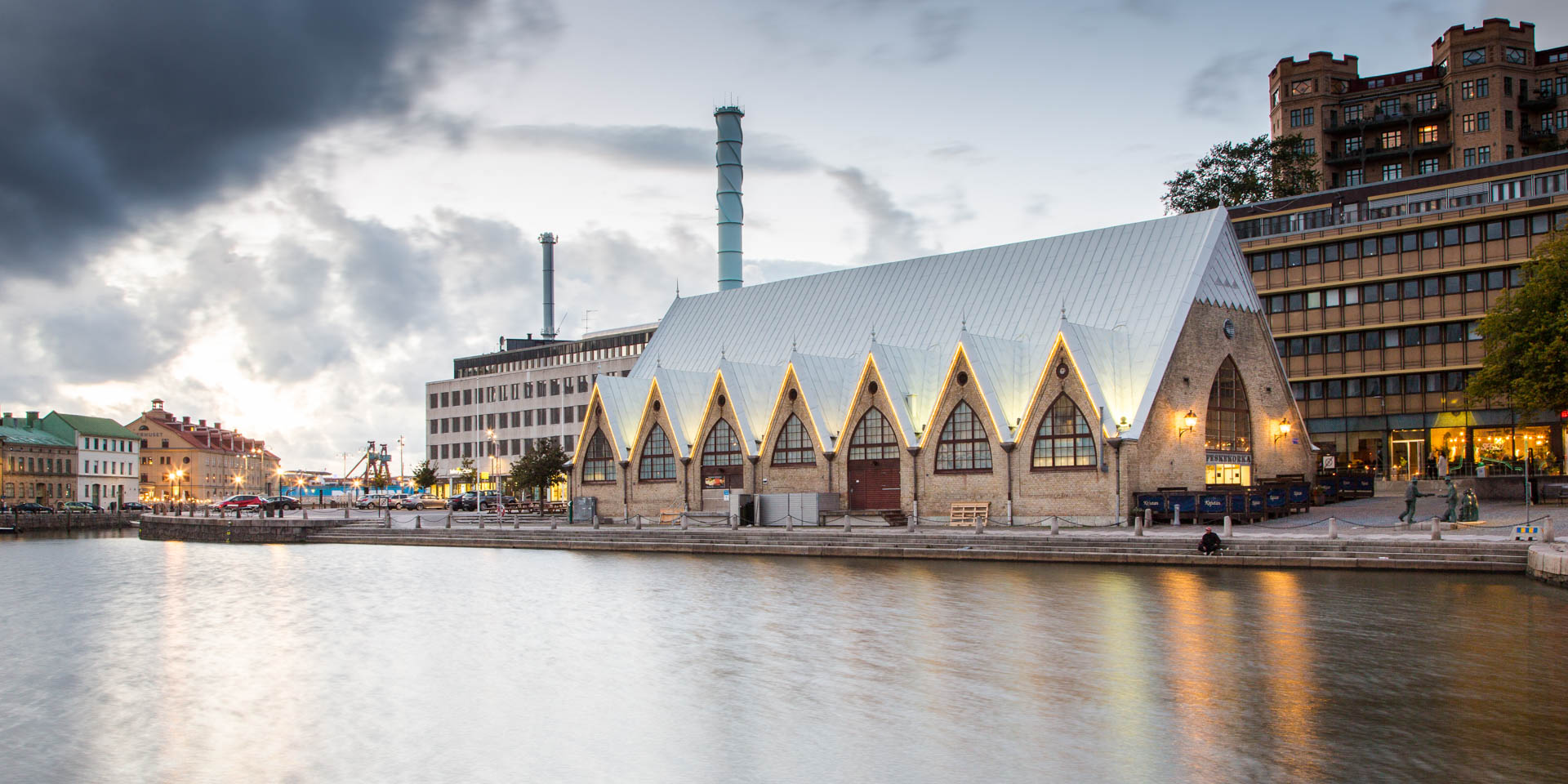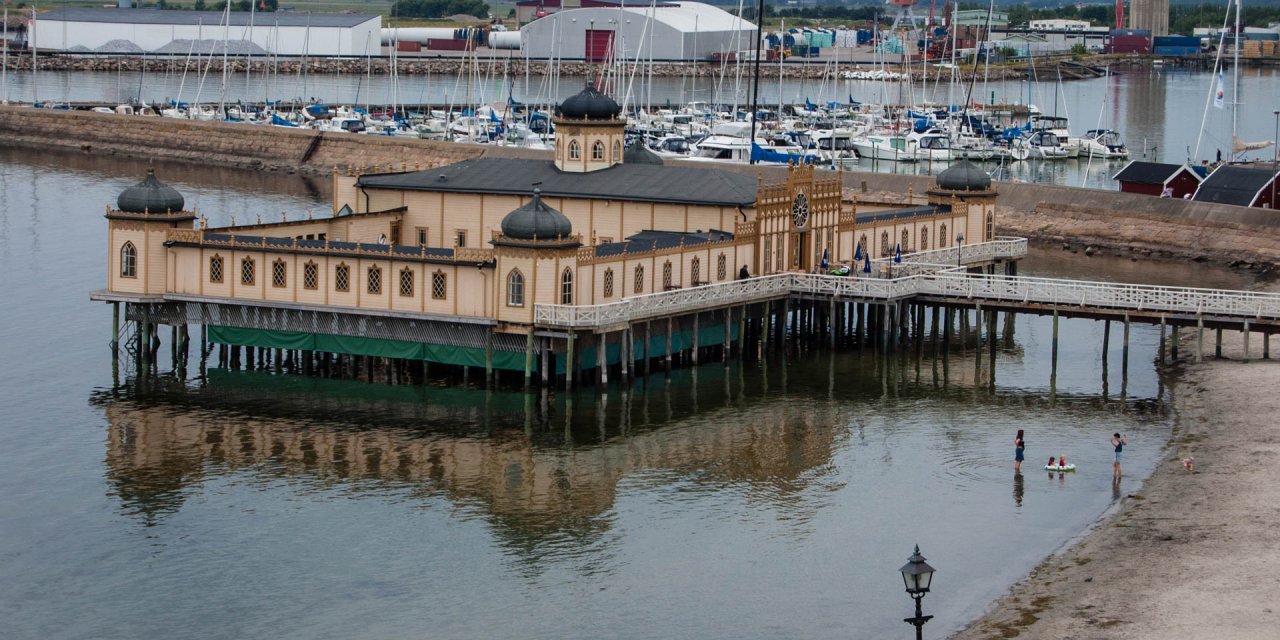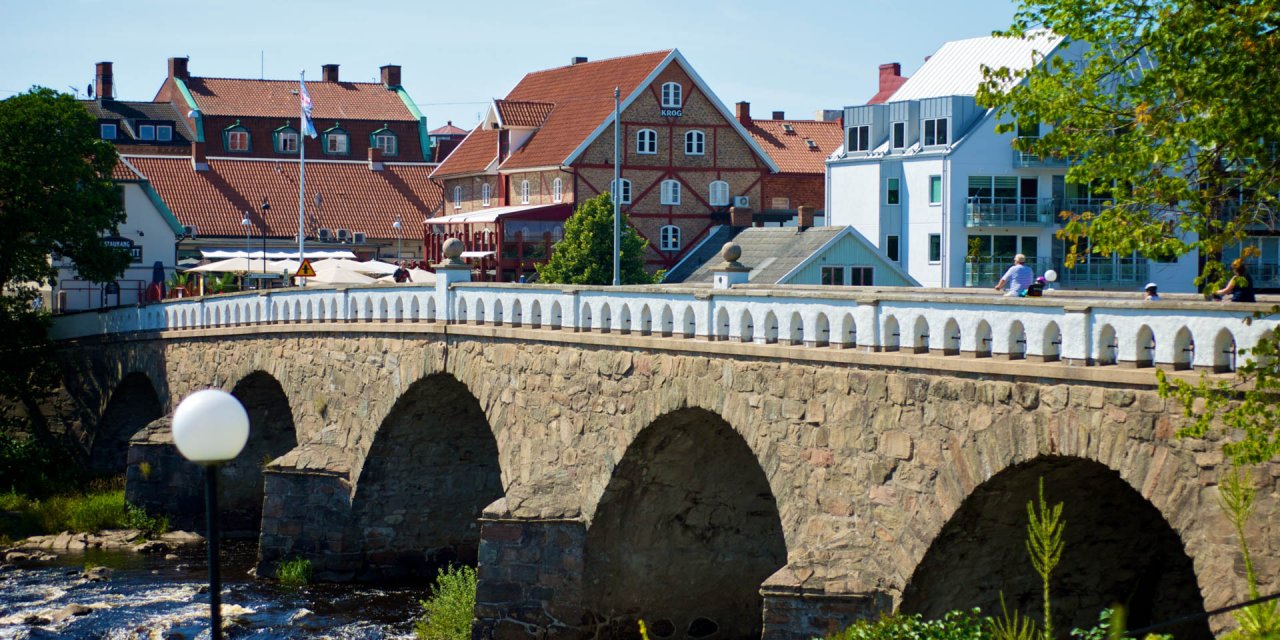

Feskekôrka
The Fish Church in Gothenburg
The historic fish market hall Feskekôrka is one of the landmarks in the centre of the West Swedish metropolis Gothenburg. The official name Feskekôrka, in the local dialect for Fiskekyrkan (The Fish Church), refers to the architectural similarity with a church.
Due to extensive restoration and reconstruction work, Feskekôrka will be closed for a longer period of time from the first half of 2020. The future use of the hall after completion of the construction work is not yet certain.
On both sides of the approximately 40-metre long fish market hall, the sales counters are lined up with a huge range of freshly caught fish, shellfish and crustaceans as well as prepared dishes and ready-to-eat snacks. On both gable sides of Feskekôrka there is a fish restaurant with a well-assorted menu, whose dishes can also be enjoyed in the outdoor restaurant with a view of the adjacent Rosenlunds Canal when the weather is fine.
The history of Feskekôrka
Feskekôrka was built according to the plans of the Gothenburg city architect Victor von Gegerfelt (1817 – 1915) and was inaugurated on November 1, 1874 as a fish auction hall. Apart from its unusual exterior, the interior architecture of Feskekôrka is also remarkable for its time, as the substructure of the roof was designed to allow the large hall to function entirely without supporting walls or pillars.
Following the architecture of early Scandinavian stave churches as well as neo-Gothic church buildings, Gegerfelt created a futuristic building for its time. With a high steep gable roof and large ogival windows on both long sides, the building makes the viewer think at first glance of a church building rather than a profane market hall. In this regard, it was almost predictable that the building, which was originally officially called fish hall, would be renamed Feskekôrka by the Gothenburg citizens shortly after its opening.
When the new fishing port opened a few kilometres to the west in 1910, the regular fish auctions for professional trade were moved there. From then on, Feskekôrka established itself as a fish market hall for the end consumer and became a tourist attraction very early on due to its rich offer. In 2013, Feskekôrka, which is owned by the city, was declared an architectural monument.



